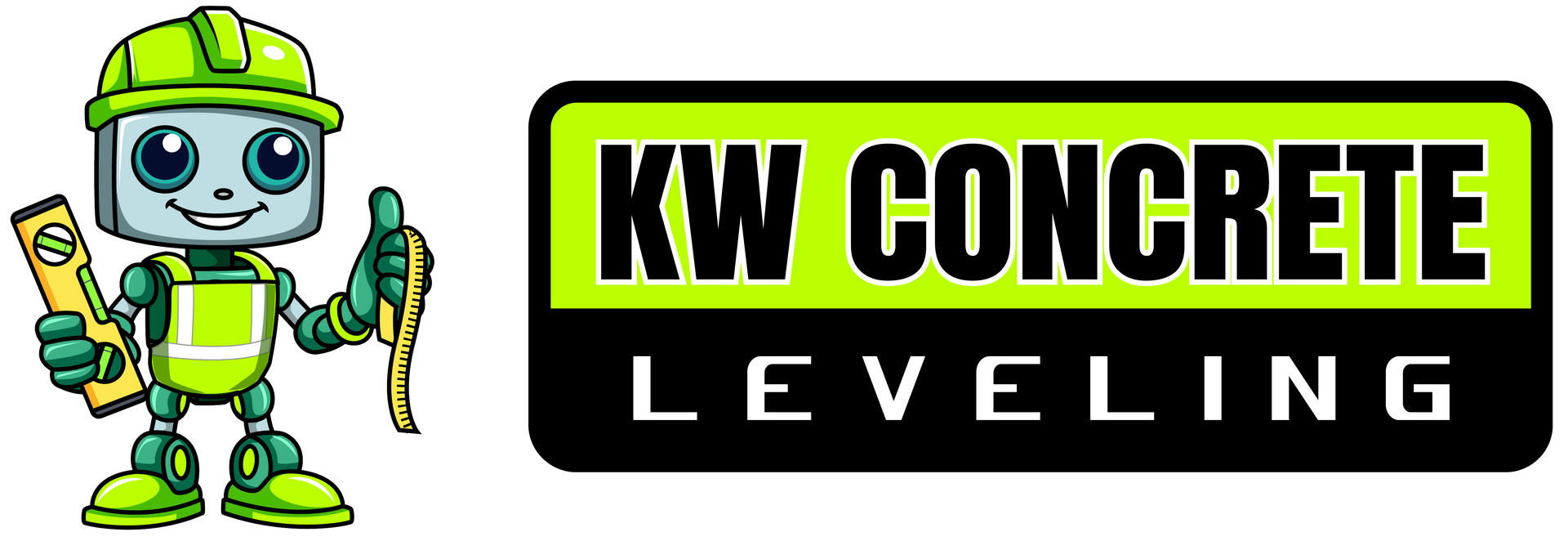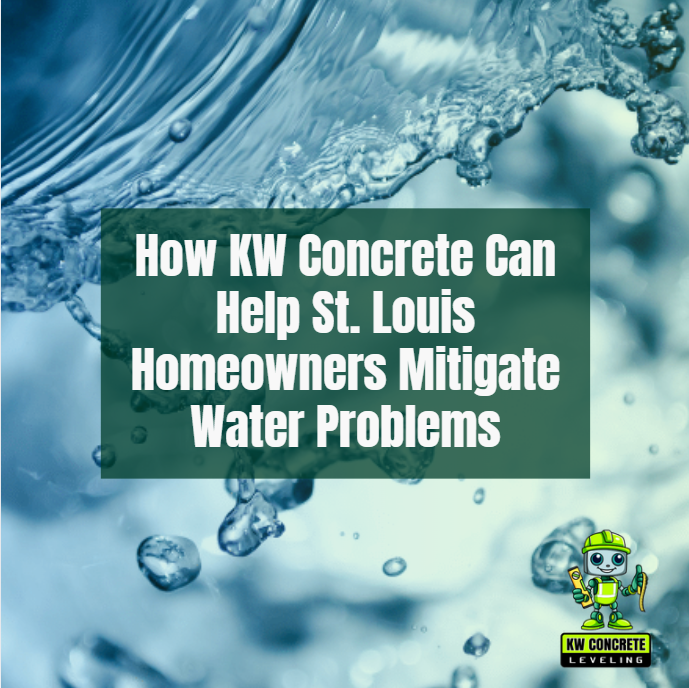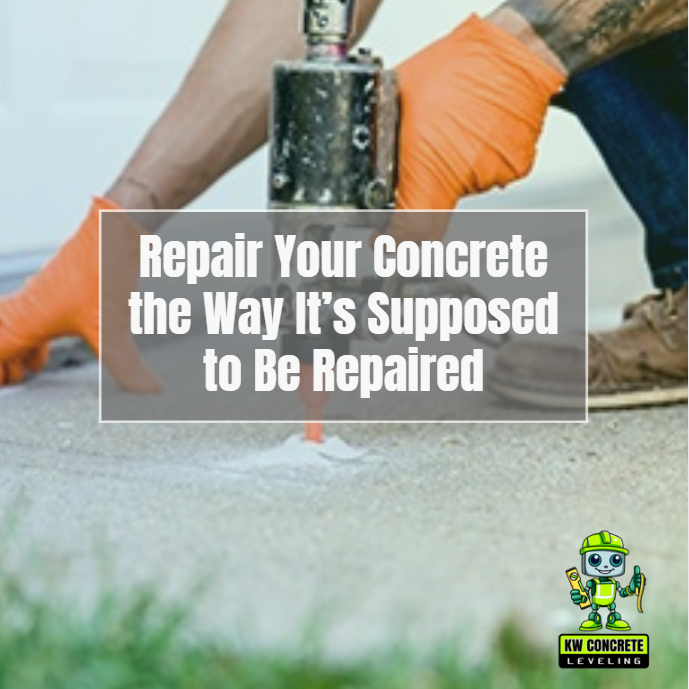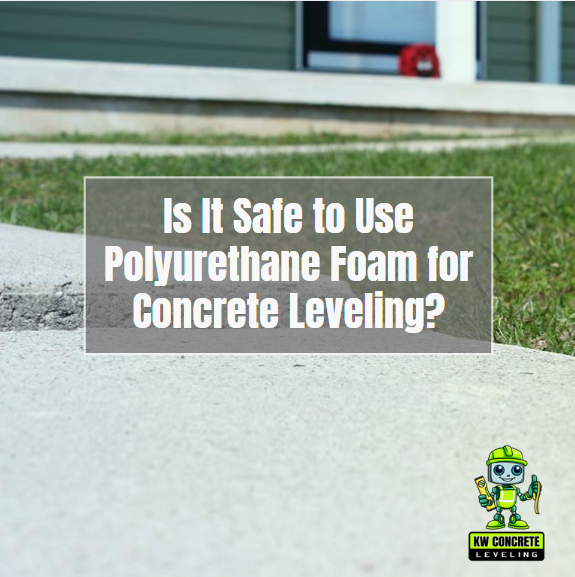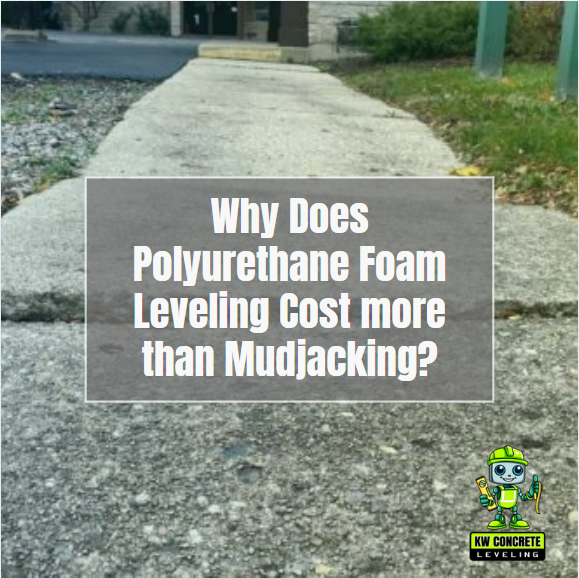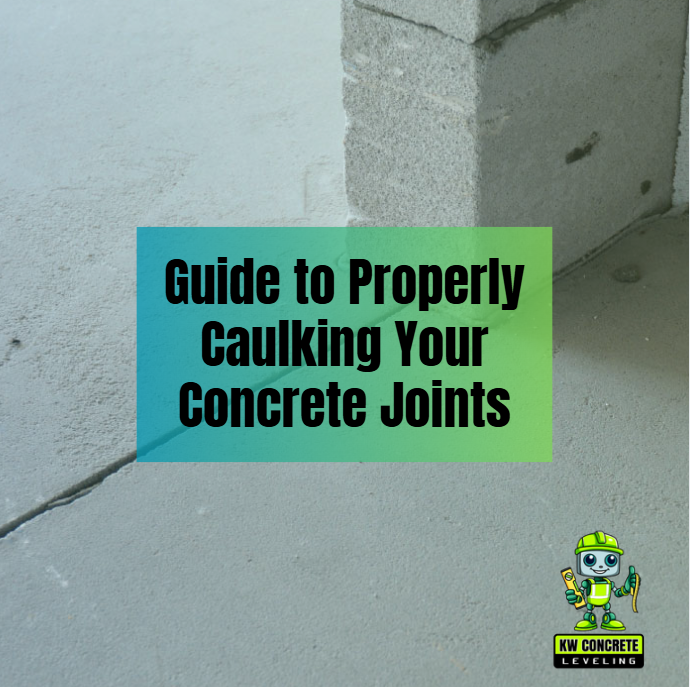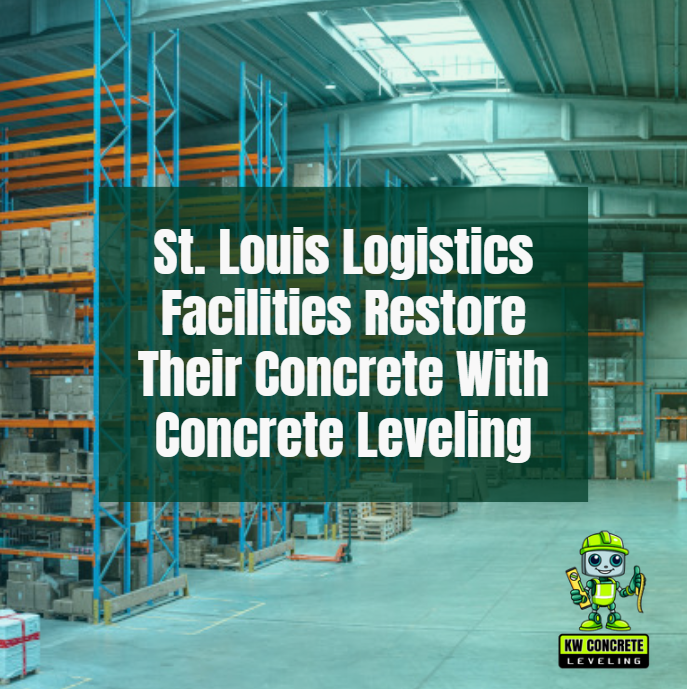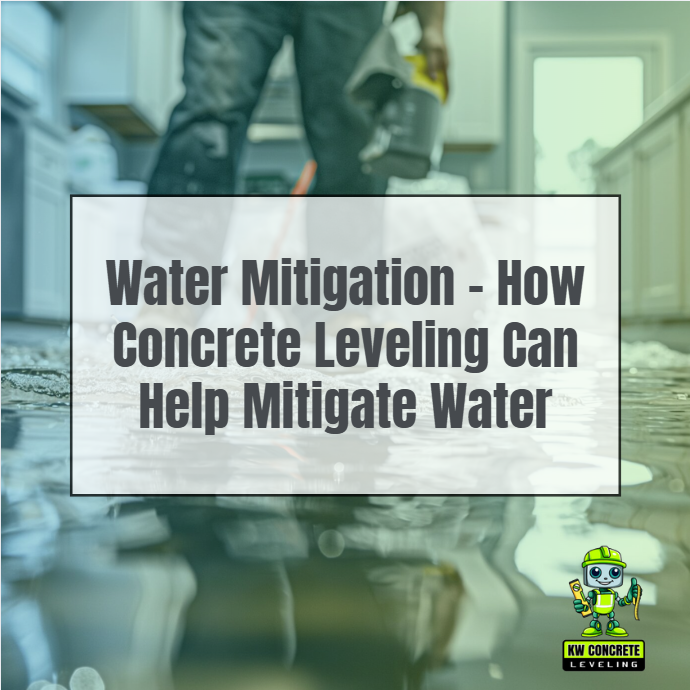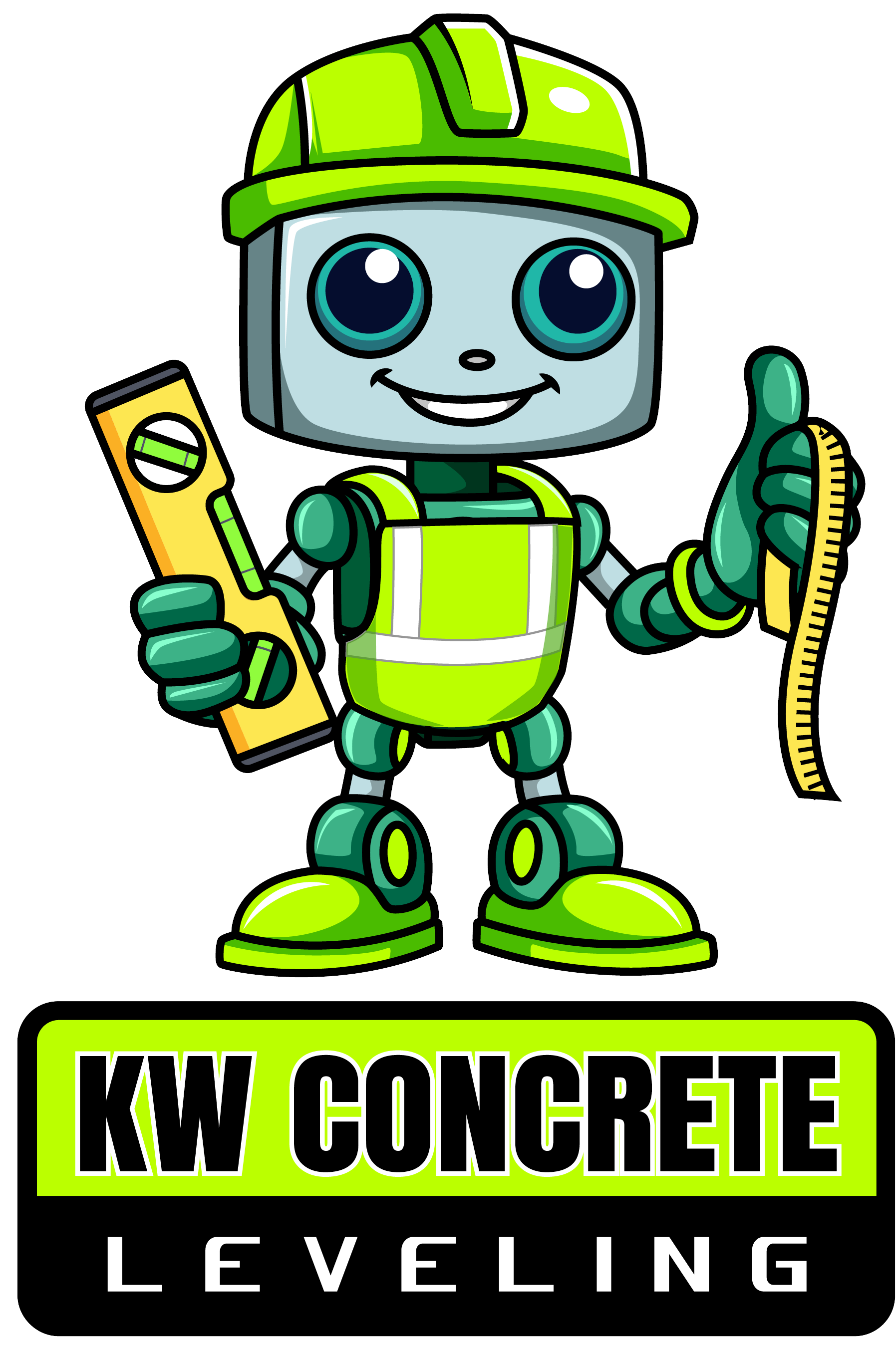What is Concrete Leveling?

Let's Learn About Concrete Leveling
Some concrete surfaces, like driveways, sidewalks, patios, and garage floors, crack, dip, or become uneven over time. This is often due to soil shifting, moisture changes, or normal wear and tear of daily use.
Uneven concrete is unattractive and can cause tripping hazards and drainage problems. Concrete leveling can be used to restore the evenness of these surfaces without having to replace them completely. This blog will explain concrete leveling, how it works, the types and whether it's for you.
What is Concrete Leveling?
Concrete leveling raises and restores sunken or uneven concrete surfaces to a level state. This method fills in the gaps underneath the slab to raise it back into place instead of removing and replacing the old concrete.
It is faster, less expensive and more environmentally friendly than full concrete replacement. Concrete leveling may be applied to
driveways,
patios,
sidewalks,
garages and even basements.
How Does Concrete Leveling Work?
Concrete leveling involves putting a specific material under the sunken concrete to fill in gaps and bring the slab back to its original position. The process typically includes the following steps:
Assessment: Afterward professionals inspect the area to determine the cause and scope of the problem.
Drilling: At strategic points, tiny holes (about the size of a dime) are drilled into the concrete slab.
Injections: A lifting material such as polyurethane foam, stone slurry grout, or mudjacking slurry is injected under the slab.
Leveling: The expanding material fills in the gaps and raises the concrete back up into place.
Sealing: All of the drilled holes are patched and sealed.
This takes a few hours typically and the area is ready for use immediately after.
Types of Concrete Leveling
There are two main types of concrete leveling methods with different benefits and use cases.
Polyurethane foam leveling v.s leveling with mudjacking. The most common types are outlined below :
Leveling Polyurethane Foam
What It Does:
This method involves injecting a light, high-density polyurethane foam beneath the concrete slab. The foam enters the slab through small, strategically placed holes drilled into the slab. The foam expands as it's injected to fill any voids, gaps or air pockets that may have formed beneath the surface.
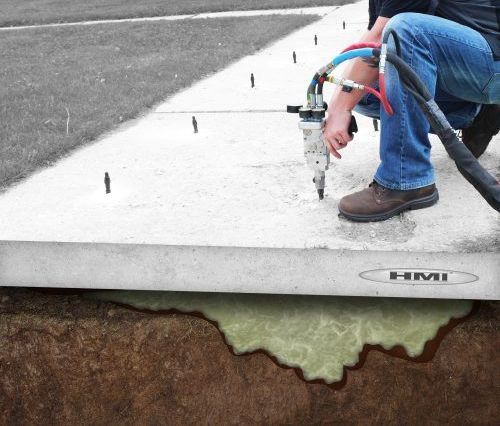
Leveling with Mudjacking
What It Does: A thick mixture of cement, sand, and soil ("mud") is pumped under the slab to raise it
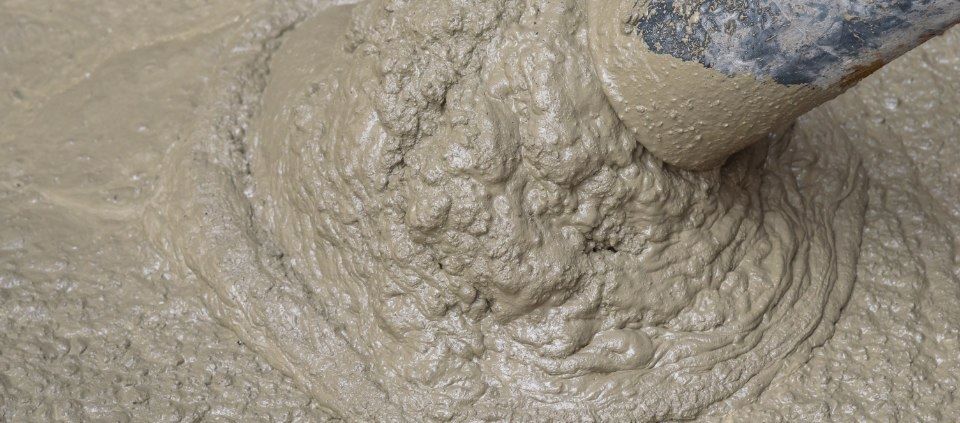
Types of Concrete We Use: Polyurethane Foam Leveling
Among them, polyurethane foam leveling is among the most widely used options, because of its fast and long performance. This involves injecting a light, expanding foam under the concrete to lift it up and support it. It's suitable for residential, industrial and
commercial use because of its brief cure time and little disturbance. The foam is also environmentally friendly, moisture resistant and will not settle in the future.
Concrete Leveling Cost
The cost of concrete leveling depends on several factors:
Area Size: Larger areas require more material and more time.
Damage Extent: Heavily sunken or cracked concrete will require more material and labor.
Type of Leveling: Polyurethane foam is typically more expensive than mudjacking but provides better performance.
According to the method and site conditions, concrete leveling costs average $3 to $25 per square foot. Polyurethane foam leveling is more expensive up front but lasts longer and requires fewer repairs down the road.
The Pros and Cons of Concrete Leveling
Pros:
- Cost-Effective: It is less expensive than total replacement.
- Quick Process: Majority of projects are finished in a few hours.
- Disruption is Minimal: No need to rip out old concrete.
- Environmentally Friendly: Uses fewer resources than replacement.
- Durable: Properly done, provides long-term support.
Cons:
- Not Suitable for All Damage: Very badly cracked or broken concrete may need to be replaced.
- Longer Lifespan (for Some Methods): Traditional mud jacking will not last.
- Initially Cost: Leveling with polyurethane foam is more expensive upfront than mudjacking.
When to Level Concrete
Look for concrete leveling if you see any of the following signs:
- Surfaces that are uneven or sloping.
- Trip hazards or differences in height between concrete sections.
- Poor drainage - pooling water.
- There are visible cracks from settling.
- Taking care of these issues early can prevent larger, more expensive repairs later. So act as soon as you start to see signs of sinking or unevenness.
Is Concrete Leveling Right for You?
If your concrete is uneven but structurally sound, you can use concrete leveling. It is ideal for businesses and homeowners who wish to restore their walkways, driveways and patios for a fraction of the price of full replacement. If your concrete has big cracks or is crumbling, a replacement may be better. Seek guidance from a professional about your unique situation and the very best course of action.
Concrete leveling is a fast, easy and inexpensive fix for sunken or uneven concrete surfaces. Knowing the types, costs and methods means you can determine if it is right for you. Contact
KW concrete leveling specialist in your area for advice and service.
Concrete Leveling FAQ's
How Long Does Concrete Leveling Take?
Most concrete leveling jobs can be completed within a few hours, making it a quick and efficient solution for uneven surfaces. The exact time required depends on factors such as the size of the area, the severity of the unevenness, and the method used.
Is Concrete Leveling Permanent?
No, concrete leveling is a temporary but long lasting solution when done correctly. Modern techniques, such as polyurethane foam leveling, offer long-lasting results by stabilizing the base and lifting the concrete slab back to its original position. The foam used in this process is resistant to water, pests, and soil erosion, ensuring the stability of the surface for years to come.
Can I Level Concrete Myself?
DIY concrete leveling kits are available, but they may not deliver the precision and durability of a professional job. These kits often involve using self-leveling compounds, which can be effective for small, shallow surface issues.
Can You Level Concrete With Large Cracks?
It depends on the size and severity of the cracks. Small surface cracks can often be filled and leveled, but large, structural cracks may indicate deeper problems, such as a compromised foundation. If the
cracks are caused by shifting soil or erosion beneath the slab, professional leveling with polyurethane foam can stabilize the base and close small gaps.
Does Weather Affect Concrete Leveling?
Yes, weather can impact concrete leveling, but modern techniques are more adaptable to various weather conditions. For example, rain or extreme cold may delay traditional mudjacking, as excess moisture can affect the slurry used to lift the concrete, however polyurethane foam injection will not be impacted by weather. Both mudjacking and foam can be injected while raining, however at KW Concrete Leveling we will typically work around heavy rain when possible.
Share This post with others!
Call For An Estimate!

